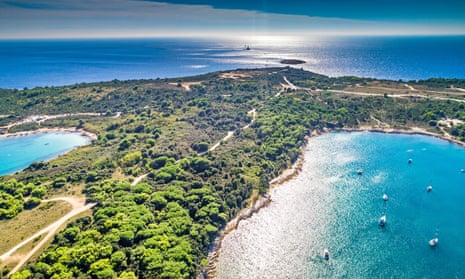Europe’s marine wildlife sanctuaries are no more than “paper parks” that are failing to protect the seas, a report from conservationists has said.
European seas, from the North East Atlantic ocean to the Adriatic, are in a “poor condition”, with coastal states failing to meet targets to protect marine wildlife, a report by WWF has concluded.
Under EU law, coastal states are obliged to create marine protected areas to protect specific species or habitats. The report found that only 1.8% of Europe’s seas are covered by marine protected areas, with management plans. “This effectively makes them paper parks,” WWF said in a statement on its report that assessed progress in the EU’s 23 coastal states.
The requirement to create marine protected areas is part of the EU’s efforts to meet international targets to ensure that 10% of the world’s oceans are protected by 2020 – a goal campaigners believe is too weak to ensure thriving seas and oceans in the long-term.
Janica Borg, lead author of the study, said it was impossible for Europe to meet the 2020 target. “Without urgent action to implement effective plans for nature conservation or restoration, with proper restrictions against extractive activities, nearly all EU MPAs will fail to support our ocean’s resilience in the climate emergency” she said.
The study found that 19 of 23 member states were falling behind on developing management plans while 11 had not announced any plan at all.
The patchy effort means that wildlife in the Baltic, North Sea and Mediterranean remains vulnerable to overfishing, bottom trawling, drilling for oil or gas, or noise coming from wind turbines being hammered into the seabed. Scientists revealed last year that destructive fishing is worse in wildlife zones than outside them.
The authors highlighted the problems at Dogger Bank, the large sand bank in the North sea, described as a “cross-border conservation failure” by the UK, Germany and Denmark. Despite a decade of talks on conservation, bottom fishing continues to scar the seabed, while sharks and corals are swept up by industrial trawlers.
“There is no one issue to be singled out,” Borg said. “We have really good nature laws … the problem is implementation. Shortcuts are made, derogations are allowed from some of these laws and that means what was intended to be a good way to protect European nature is falling short.”
The European commission, which is responsible for upholding EU law, has painted a rosier picture of progress towards the 2020 target, reporting that 10.8% of Europe’s seas had been designated as a marine protected areas by the end of 2016. But the WWF report focuses on what is happening at sea, rather than goals.
The commission concedes, however, that most marine protected areas are too small, as more than half of the sites are less than 30km squared. It has urged member states to create larger reserves in deeper waters.
Marine protected areas restrict economic activities, but also contain smaller marine reserves, where all fishing and energy extraction is banned.
WWF argues that short-term economic interests have been prioritised for too long. “Traditionally, marine protection has been seen as a sideline activity,” Borg said. “It is easy at first to put your fisheries in place, to put your shipping in place and only then to start looking at the area we have for conserving nature. But that is actually the wrong way round. Marine protection isn’t a hobby … It is something we do because it is absolutely imperative for having any kind of sustainable economy in the future.”
